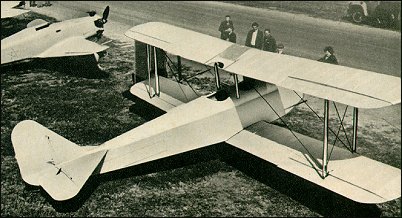 |
Yakovlev VVA-3 / AIR-11927 |  |
| SPORT, TRAINING | Virtual Aircraft Museum / USSR / Russia / Yakovlev |
 |
After success with the glider young designer decided to build single-seat 'flying motorcycle' with 18hp engine. But consultations with his advisor and good-wisher Vladimir Pyshnov changed Yakovlev's plans. There was a need in two-seat trainer with much more powerful engine. 60hp 'Cirrus' was chosen. Wood-and-fabric construction was common for light trainers, with front and upper parts of the fuselage covered with plywood. While working as a mechanic at Khodynka airfield, Yakovlev had access to aircraft graveyard in ravine next to the flight area. In the course of a dozen years it was filled with wrecked airframes from all over the world, and Alexandre Sergeevich fully used his chance to study variety of construction, examine the nature of breakdowns and to discover the weak points in damaged parts. Finally the project was approved by Osoaviakhim, and Yakovlev received money collected by Moscow Pioneers. After day's work on airfield he turned into designer, treasurer and administrator at the same time. Among his backers at this critical time was S.V.Ilyushin. But some ill-wishers were around too. They not just expressed their skepticism. One of students at the Academy handed in a report about errors in Yakovlev's calculations. Yakovlev was summoned by the Osoaviakhim executives and was examined on aircraft airworthiness. He was discouraged and almost lost trust in his project. But V.Pyshnov checked his calculation and gave Yakovlev written certificate with his personal approval. AIR-1 was finished on May 1, 1927 and performed its maiden flight on May 12 with Yu.I.Piontkovsky at controls. It was a complete success. All test requirements were fulfilled within following two weeks, without serious rebuilds. Aircraft was approved for trial flight Moscow-Kharkov-Sevastopol-Moscow. It was piloted by Yu.I.Piontkovsky, A.S.Yakovlev participated as a passenger. They took off early on June 12, 1927 from Moscow. After landing and refueling in Kharkov they touched down in Sevastopol in the evening of the same day. The return leg was made by Piontkovsky alone. He flew non-stop for 15h 30min and covered distance 1420km, giving birth to two records in aircraft class: for distance covered and time being airborne. Designer and test-pilot were given money rewards and diplomas. But the greatest reward was Yakovlev's acceptance by Air Force Academy (VVA). During Fall same year AIR-1 participated in military exercises of Odessa military district, serving as communication aircraft. It proved to be superior over other presented light aircraft (powered by 18-20hp engines). Later AIR-1 was operated by flying clubs.
|  COMPANY PROFILE | ||||||||||||||||||||||||||||||||||||||||||||||||||||||
 |

|

